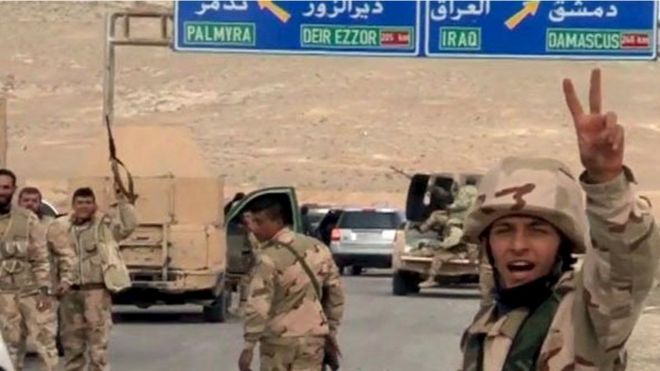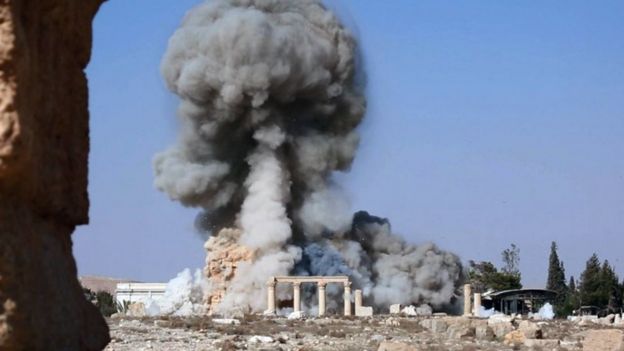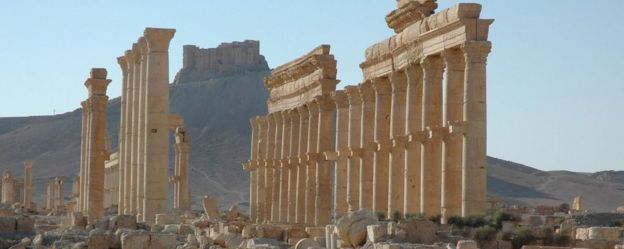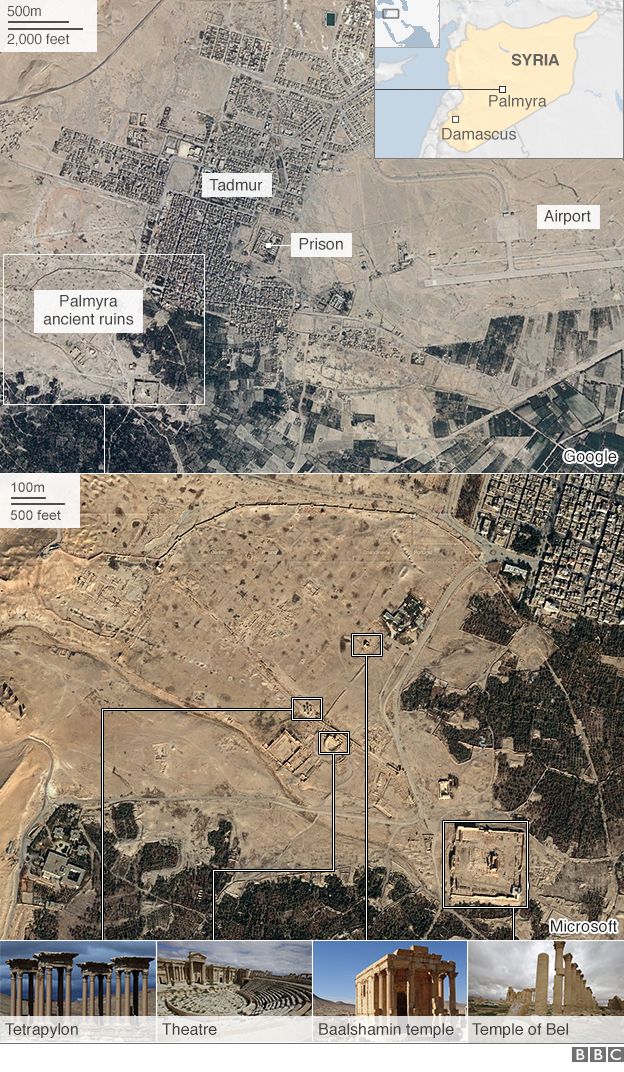- 24 March 2016
- Middle East
 Reuters
Reuters
Syrian government forces have entered the ancient town of Palmyra seized by Islamic State (IS) militants last year, state TV has said.
Observers say troops have advanced into a hotel district south-west of the city, a Unesco World Heritage site.
Officials launched an offensive to retake the city earlier this month, backed by Russian air strikes.
The city is situated in a strategically important area between Damascus and the contested eastern city of Deir al-Zour.
IS seized the ruins of Palmyra and the adjoining modern town in May. It subsequently destroyed two 2,000-year-old temples, an arch and funerary towers, provoking global outrage.
The jihadist group, which has also demolished several world-renowned pre-Islamic sites in neighbouring Iraq, believes that such structures are idolatrous.
Unesco, the UN's cultural agency, has condemned the destruction as a war crime.
State media showed warplanes flying overhead, helicopters firing missiles, and soldiers and armoured vehicles approaching Palmyra.
The UK-based monitoring group, the Syrian Observatory for Human Rights, said forces advanced into the hotel district and reached the start of a residential area but were moving slowly because of mines planted by IS, AFP news agency reported.
Regime forces were also making incursions from the northern part of the city, the agency added.
There were unconfirmed reports of casualties on both sides.
 AP
AP
The Observatory said civilians began fleeing after IS warned them via loudspeakers to leave the city centre as fighting was drawing closer.
The advance comes after the Syrian army and allied militia took control of several hills overlooking the city earlier this week.
Palmyra's significance
Recapturing Palmyra would be a significant victory for the government and Russia, which withdrew most of its forces last week after a six-month air campaign against opponents of President Bashar al-Assad that turned the tide of the five-year civil war in his favour.
Despite the reported setbacks, IS claimed its fighters inflicted heavy casualties on the advancing forces, according to its weekly publication Al Naba.
Ancient city of Palmyra
 Unesco
Unesco- Unesco World Heritage site
- Site contains monumental ruins of great city, once one of the most important cultural centres of the ancient world
- Art and architecture, from the 1st and 2nd centuries, combine Greco-Roman techniques with local traditions and Persian influences
- More than 1,000 columns, a Roman aqueduct and a formidable necropolis of more than 500 tombs made up the archaeological site
- More than 150,000 tourists visited Palmyra every year before the Syrian conflict
On Wednesday, the group issued pictures purported to show several Syrian army vehicles destroyed by its fire. However, its daily radio news bulletins have not mentioned the fighting in Palmyra in the last few days.
The Syrian offensive comes as representatives of the government and the main opposition umbrella group attend UN-led talks in Geneva aimed at finding a political solution to end the war.
The talks have been boosted by a nationwide cessation of hostilities brokered by the US and Russia that has largely held since it began on 27 February.
IS and its rival jihadist group, al-Nusra Front, are excluded from the truce.

The reduction in violence has also allowed aid to be delivered to besieged areas.
Meanwhile, the US-led coalition said it had conducted eight strikes against IS positions in Syria on Wednesday.
The offensive near four cities - Hawl, Manbij, Mara and Palmyra - hit seven of the group's fighting positions and three tactical units, the Combined Joint Task Forcesaid in a statement.

No comments:
Post a Comment